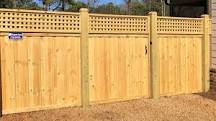When it comes to creating a Zen garden, the type of sand you choose is crucial for achieving that serene and meditative atmosphere. The best options are fine sands like white sand, river sand, or even crushed granite. Each type brings its own unique aesthetic and feel, contributing to the overall tranquility of the space.
The Importance of Sand in Zen Gardens
Zen gardens, or karesansui, are designed to evoke peace and contemplation. The sand in these gardens symbolizes water and is meticulously raked into patterns that mimic the natural flow of rivers or waves. Here’s a breakdown of some popular types of sand used in Zen gardens:
Fine Sand
Fine sand is often what you picture when you think of a Zen garden. It’s soft, smooth, and typically comes in shades of white or beige. This type of sand is great for raking and creates a refined look. However, it can be a bit reflective under bright sunlight, which might distract from your peaceful vibes.
River Sand
River sand is another fantastic choice. Its natural texture and calming appearance make it a favorite among gardeners. The smooth grains promote relaxation and blend beautifully with other natural elements like rocks and plants. Plus, it’s easy to rake!
Crushed Granite
If you’re looking for something that stands out, crushed granite might be your best bet. It’s a bit pricier but offers a fantastic raking experience and durability. Professionals often use it because it holds patterns well and adds a unique texture to the garden.
Choosing the Right Sand for Your Zen Garden
When selecting sand for your Zen garden, consider factors like color, texture, and how well it holds patterns. Here are some tips:
- Color: White or light-colored sands create a clean backdrop that enhances the beauty of rocks and plants.
- Texture: Finer sands provide a smoother surface, while coarser options allow for more defined patterns.
- Maintenance: Regular raking is essential to keep your garden looking pristine.
Incorporating the right type of sand not only elevates the aesthetic appeal but also enhances the meditative experience of tending to your garden.
FAQ
What is the best type of sand for a Zen garden?
The best type varies based on personal preference, but fine sands like white sand or river sand are highly recommended for their aesthetics and ease of raking.
Can I use regular beach sand?
While beach sand can be used, it often contains shells and other debris that might not fit the serene vibe of a Zen garden. It’s best to stick with finer sands that provide a cleaner look.
How often should I rake my Zen garden?
Raking frequency depends on personal preference. Some people enjoy raking daily as a form of meditation, while others may do it weekly or after disturbances from wind or rain.
Is crushed granite worth the investment?
Absolutely! Crushed granite offers durability and an excellent raking experience. It’s often favored by professionals for its ability to maintain patterns over time.
Creating a Zen garden is all about finding balance and tranquility. Choosing the right sand plays a big role in achieving that peaceful atmosphere where you can unwind and reflect.







